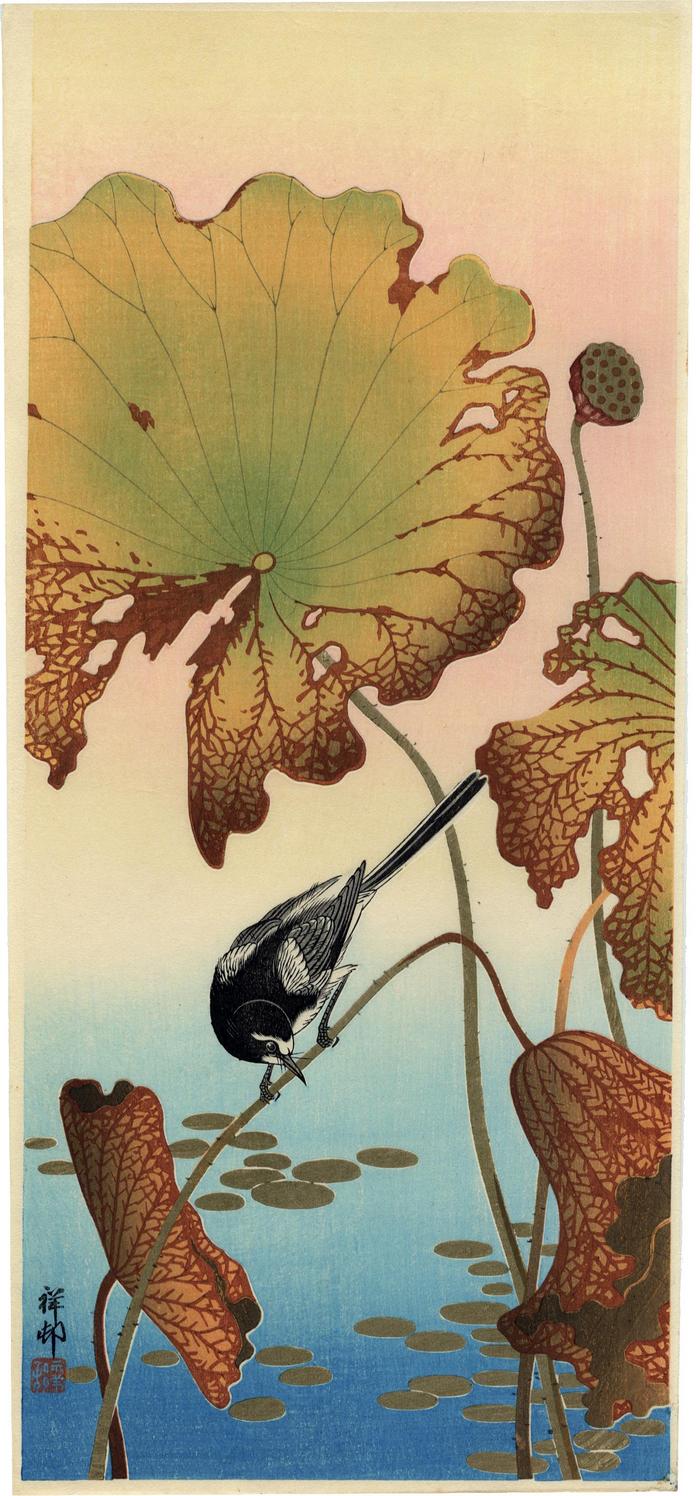Ohara Koson (小原古邨) / Shōson (祥邨) (artist 1877 – 1945)
Wagtail and lotus
1936
7 in x 15 in (Overall dimensions) Japanese color woodblock print
Signed: Shōson (祥邨)
Artist's seal: Shōson
Brooklyn Museum
Art Gallery of Greater Victoria
Lyon Collection - an ehon cover featuring a wagtail
Chazen Museum of Art The publisher of this print was Watanabe Shōzaburō. It is illustrated in color on page 150 in Crows, Cranes & Camellias. The Natural World of Ohara Koson 1877-1945 by Amy Reigle Newland.
****
The wagtail in Japanese literature and culture
In ancient myths the brother and sister gods, Izanagi and Izanami, who gave birth to the Japanese archipelago, were inspired to mate after observing the behavior of a single wagtail.
Basil Hall Chamberlain in his book, Things Japanese... wrote in a section on earlier esoteric practices at court:
Since the latter part of the middle ages, the general prevalence among the upper classes of luxury, idleness, and a superstitious veneration for the past, even in trivial matters, together with a love of mystery, produced the most puerile whims. For instance, the court nobles at Kyoto kept to themselves, with all the apparatus of esotericism, the interpretation of the names of three birds and of three trees mentioned in an ancient book of poetry called the Kokinshū. No sacrament could have been more jealously guarded from impious hands, or rather lips. But when the great scholar, Motoori, disdaining all mumbo-jumbo, brought the light of true philological criticism to bear on the texts in question, lo and behold! one of the mysterious birds proved to be none other than the familiar wagtail, the second remained difficult to fix accurately, and the third name was not that of any particular species, but merely a general expression signifying the myriad little birds that twitter in spring. The three mysterious trees were equally commonplace.****
There is a fourteenth century painting in Mary and Jackson Burke Collection. It shows a rock, a wagtail and two slender bare trees. Attached is colophon with a Zen poem:
The withered trees has no leaves on its branches;****
The wagtail pecks at the moss.
The stone contains the jade of truth;
When will he be able to open it?
In the 1850s Hiroshige produced a beautiful print of a wagtail and wisteria.
modern prints (shin hanga - 新版画) (genre)
kachō-e (bird and flower picture - 花鳥絵) (genre)
Watanabe Mokuhan Bujitsu Gahō (渡邊木版美術画舗) (publisher)
Shōwa era (昭和時代) (genre)
